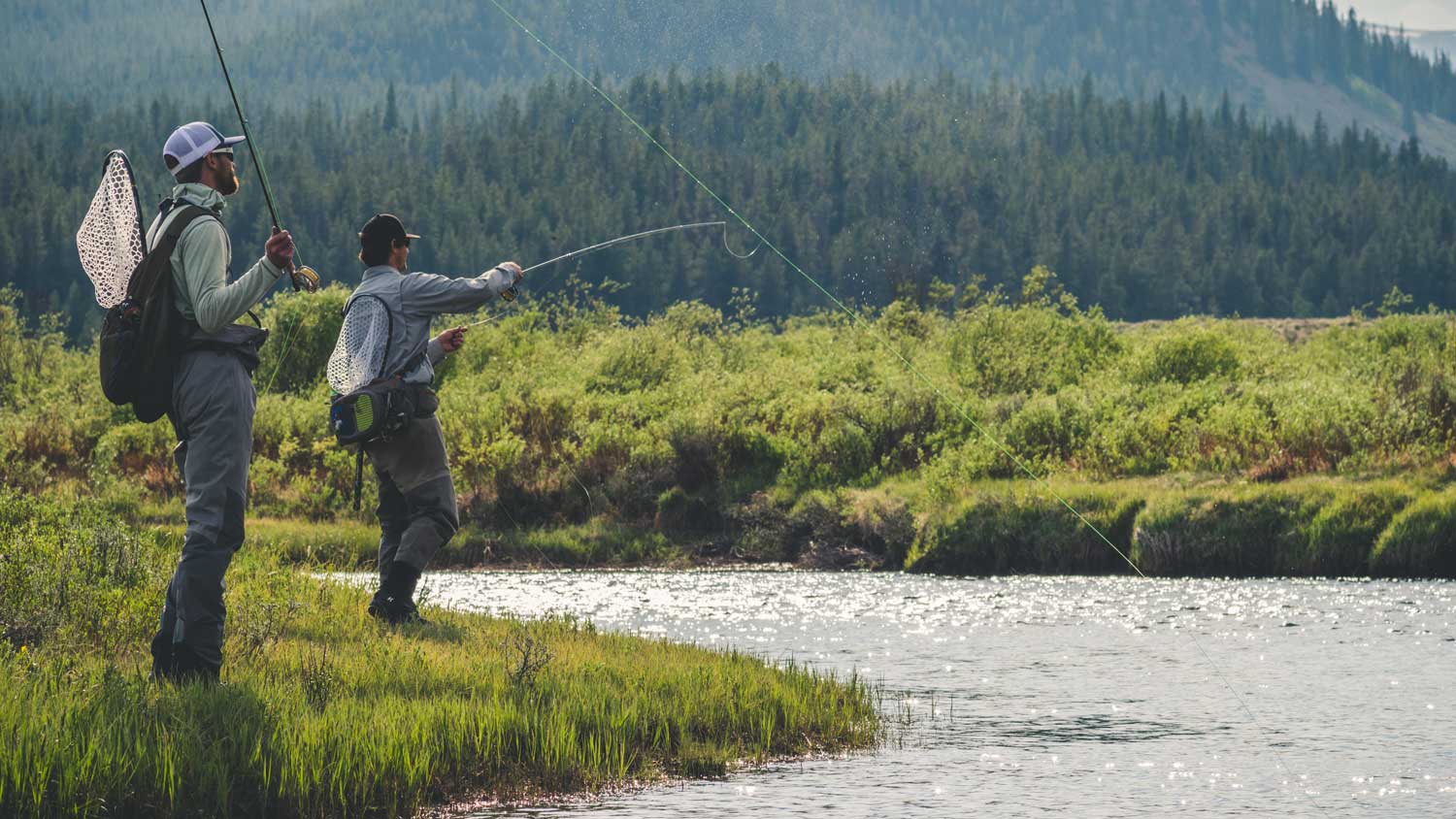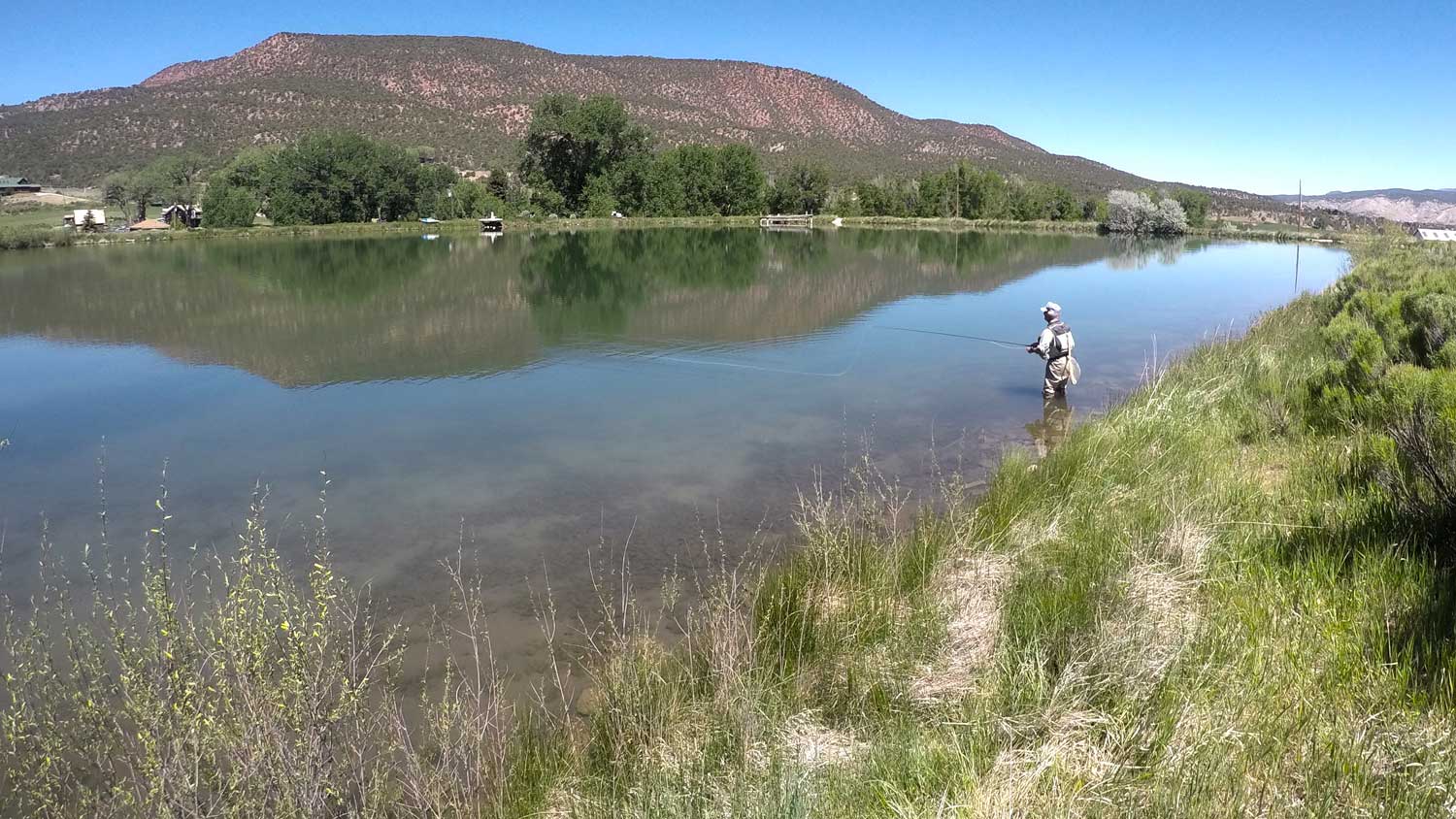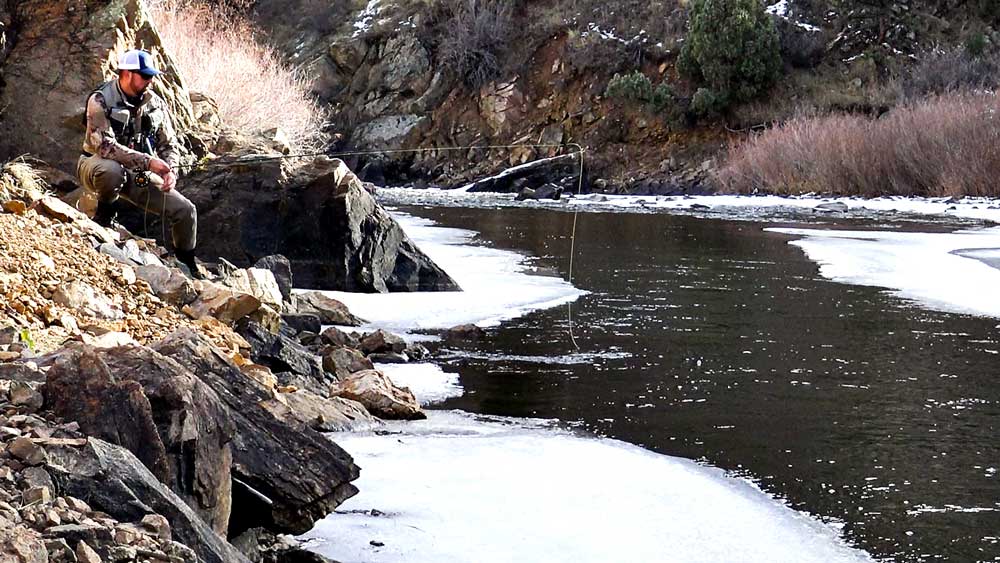
Planning an adventurous trip is usually pretty straightforward; purchase the plane tickets, rent a vehicle online, book a perfectly located hotel room or AirBnB, etc. But when planning a fly fishing trip that requires thought around the gear you’ll be using, there are a ton of micro but critical details to keep in mind. Important details that 1) get all your gear to your destination and back safely and 2) ensure that you’ll have a good time. These details, though easy to overlook, could make or break a fishing-oriented trip.
For example, we all know to pack our fly rod for a fishing trip; but we don’t always think about how to pack that said fly rod. Or we know we’ll need to have our fly rod stowed in our vehicle in order to get from fishing spot to fishing spot safely, but we may rent a vehicle that’s too small for the fly rod to fit into without disassembling to several pieces.
Luckily, there’s a lot of discussion on online forums and platforms for men and women who have been there, done that. Knowing ahead of time how to get your gear past T.S.A., what to pack as a carry on item vs. what to pack with your checked luggage, why a roof rack is ideal over assembling and disassembling your fly rod from fishing spot to fishing spot, and how to pack for your trip properly allows you to focus on what really matters; having the time of your life out on the water.

Fly Fishing Gear as Carry on or Checked Luggage?
Luckily for all of us fishermen, most major airline carriers consider fly rods and their reels as checked luggage. That said, and in cases where you are flying with a smaller airline carrier, it certainly wouldn’t hurt you to shoot them an email or give them a call and make sure your rod and reel will be permitted as checked luggage. Nothing would be a bigger buzzkill than getting to the airport and being told that your gear is a no go just because you made an assumption without doing some upfront work.
But most major airline carriers have practically seen fly rods and reels on a daily basis, so your gear should come as no surprise to them. As far as how to pack the rest of your fly fishing supplies? A great way to think of it is that T.S.A. cares about what is inside your luggage, whereas your specific airline carrier only cares about the size and weight of your bag. For items that may raise T.S.A. red flags or eyebrows, your safest bet is to pack these items in your checked luggage. This goes for knives, pliers, flies, and even fishing line (oddly enough.) If it can be used as a weapon in any way, shape, or form, try to make space for it in your checked bag.
For non-threatening items such as your rod, fly vest, or reel? These items can join you on the plane inside your carry on. The most ideal setup is a four-piece fly rod that can fit into its specifically manufactured rod tube. This keeps your gear snug and safe from any unexpected turbulence. But really, a basic rod tube that is durable and shock absorbent and meets the proper carry on weights and dimensions should do you just fine.
Although four piece fly rods have their own pros and cons, they certainly beat renting worn and torn gear from an outfitter or guide service. It also may go without saying, but really try to analyze what all you need to take with you on your trip. You want to make sure that the gear joining you on your trip is crucial and not going to take up too much space. If it’s a luxury item or not necessary to have a good fish, it doesn’t need to join you or take up your precious luggage space.

A Roof Rack for Car Travel
Roof racks are honestly hard to beat for traveling with your outdoor gear and, nowadays, it seems like everyone is sporting one that accents their favorite sport. Riversmith, based out of Boulder, Colorado, came to the market with a pretty stellar set up. Not only are their roof rack systems compatible with just about every vehicle on the road, but they are also extremely shock absorbent.
So much so, during their research and development phase, they catapulted their signature roof rack, the River Quiver, across the entire length of their parking lot to test for shock. When the roof rack survived that test, they took it a step even further and put it through a military-grade shake test. It made it out the other side on that test as well! River Quiver’s can not only accommodate several rods sizes and weights, but their protective inside liners keep your fly rods secure and well padded during travel whether paved or off-road.
Regardless of which brand you go with, a roof rack should be at the very top of your fly fishing wish list. Not only does it make the ride more comfortable for you and your passengers (say goodbye to fly rods poking the back seat riders,) but you can ensure your fly rod will make it to your fishing destination in one piece. It also prevents you from having to disassemble your fly rod after each use just to drive a few miles to the day’s next fishing destination.
No Roof Rack? Brush Up on the Old School Disassemble Method
For one reason or another, a roof rack system just isn’t in the cards for some people. Or perhaps you're renting a vehicle and it doesn’t innately sport one. Whatever the case may be, this can require anglers to disassemble and reassemble at the end of each use. This isn’t a big deal and is the old school way of getting fly rods around. But you should still definitely brush up on the disassemble method in case it needs to come into use.
Let’s say your fly rod is totally assembled and you just got done catching trout with it for the day. You’re now back to your vehicle and need to take it apart so that it will fit in the vehicle comfortably. You’ll want to start with the obvious; break the rod down to the amount of pieces it was manufactured to be broken down into.
Then velcro or tie the separate rods pieces together with rope so they are solidly intact and do not shift or slide around or against one another. Then, place them in the vehicle with the butt of the rod to the ground and the tip pointing up and in a direction safe from doors and windows. Take it a step even further and place a soft sock over the tip of the rod to prevent any contact the tip may have from causing damage.
Once your rod and all of its pieces are placed into the vehicle, play it extra safe and secure the pieces velcroed together to the vehicle itself. Not only will this prevent damage to the rod pieces, but it will also prevent damage to your vehicle that could be inflicted by it rolling around the cabin.
Keep Your Gear in Ready to Fish Shape
When you are not traveling with your rod, store it properly as often as possible. As convenient as an attic or basement space is, these places in our homes can reach erratic temperatures and humidity. A hot attic or a damp, cold basement aren’t the best conditions for rods to call home. Additionally, storing a fly rod vertically rather than horizontally exposes it to the chance of falling over and can also cause damage to your tip and ferrules.
In transit to your fly fishing destination, whether it be by plane or by car, requires a little investment up front but will be well worth the cost. Look into high-quality rod tubes for all your plane travels. Additionally, a fly rod roof rack system not only looks nice, but keeps your rod in the pristine condition they presented with upon purchase. Conditions so great, they allured you to buy in the first place.
Nothing ruins a fishing trip faster than damage to your fly rod, reel, or fishing equipment due to neglect. Most damage inflicted onto fishing gear is preventable. Don’t make the rookie mistake and assume your rod can survive everything you put it through.
Put it this way; time is money and memories out on the water. You want to get in the habit of spending a little time up front and in-between fishing spots to take care of your gear. The more attention to detail you put into where your gear goes, how safe it is packed, and what risks it could be exposed to, the better off you and your rod will be.

Matthew Bernhardt, a third-generation Coloradan, grew up at the forefront of the state’s fly-fishing revolution, enjoying time on the water, side by side with experienced guides and lifelong anglers.
By combining his passion for fly-fishing with input from other experienced fly-fishers and guides and his fine arts degree from Colorado State University, Matthew spent five years carefully developing the Drifthook Fly Fishing System, built to help every angler catch more trout.
When he’s not spending time with his wonderful family, you’ll find him out on the water catching MONSTER trout, and he anxiously looks forward to the day when his kids are old enough to join him there.




